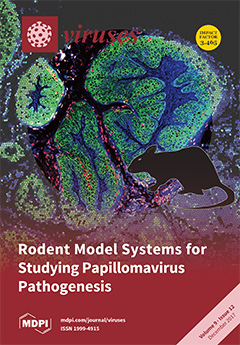Open AccessArticle
Characterization of a Novel Bat Adenovirus Isolated from Straw-Colored Fruit Bat (Eidolon helvum)
by
Hirohito Ogawa, Masahiro Kajihara, Naganori Nao, Asako Shigeno, Daisuke Fujikura, Bernard M. Hang’ombe, Aaron S. Mweene, Alisheke Mutemwa, David Squarre, Masao Yamada, Hideaki Higashi, Hirofumi Sawa and Ayato Takada
Cited by 20 | Viewed by 5647
Abstract
Bats are important reservoirs for emerging zoonotic viruses. For extensive surveys of potential pathogens in straw-colored fruit bats (
Eidolon helvum) in Zambia, a total of 107 spleen samples of
E. helvum in 2006 were inoculated onto Vero E6 cells. The cell
[...] Read more.
Bats are important reservoirs for emerging zoonotic viruses. For extensive surveys of potential pathogens in straw-colored fruit bats (
Eidolon helvum) in Zambia, a total of 107 spleen samples of
E. helvum in 2006 were inoculated onto Vero E6 cells. The cell culture inoculated with one of the samples (ZFB06-106) exhibited remarkable cytopathic changes. Based on the ultrastructural property in negative staining and cross-reactivity in immunofluorescence assays, the virus was suspected to be an adenovirus, and tentatively named
E. helvum adenovirus 06-106 (EhAdV 06-106). Analysis of the full-length genome of 30,134 bp, determined by next-generation sequencing, showed the presence of 28 open reading frames. Phylogenetic analyses confirmed that EhAdV 06-106 represented a novel bat adenovirus species in the genus
Mastadenovirus. The virus shared similar characteristics of low G + C contents with recently isolated members of species
Bat mastadenoviruses E,
F and
G, from which EhAdV 06-106 diverged by more than 15% based on the distance matrix analysis of DNA polymerase amino acid sequences. According to the taxonomic criteria, we propose the tentative new species name “
Bat mastadenovirus H”. Because EhAdV 06-106 exhibited a wide in vitro cell tropism, the virus might have a potential risk as an emerging virus through cross-species transmission.
Full article
►▼
Show Figures






